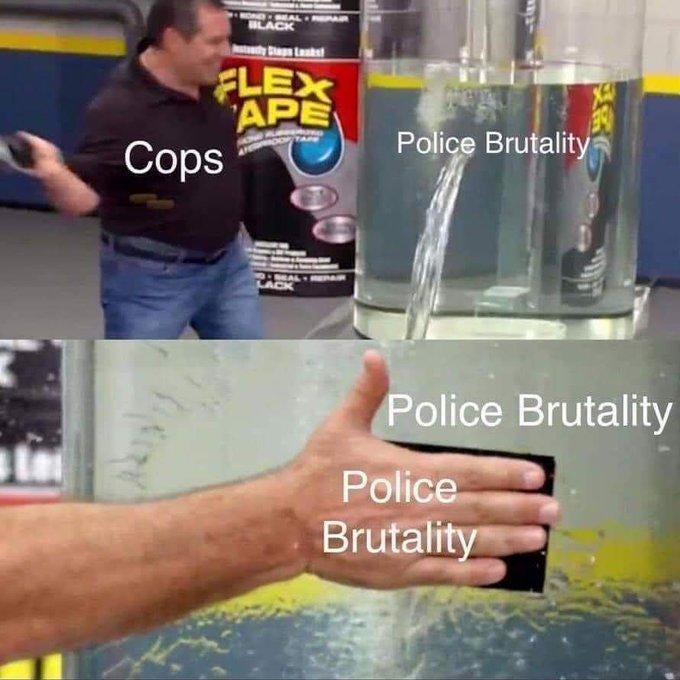41: Social justice warriors
We look back on this chapter in history with self-congratulatory warmth, but loathed it as it happened

The Monk by the Sea (German: Der Mönch am Meer) by Caspar David Friedrich 1808-10
Last year, a person you might remember named Barack Obama was addressing a group of wealthy liberal donors and cautioned against the Democratic Party leaning too far toward the views of “certain left-leaning Twitter feeds” or “the activist wing of our party.” It upset a lot of people, and even though he also said “that’s not a criticism of the activist wing,” there was something dismissive about his phrasing that stung, coming from a president who basically campaigned and at least initially tried to run an administration on the basis of wanting to change the system. In fact, you would hope that any elected official left of the GOP would consider activism—fighting to bring about social change—the entire job description.
Even if you give Obama the benefit of the doubt on his comments, there seems to be a widespread sentiment out there that an activist is a marginal voice—someone not to be taken seriously, who is unrealistic or inauthentic, or is merely performing for an audience.
In a recent This American Life, my favorite radio show to swear at, a correspondent did some fly on the wall reporting at a popular New York bodega in the midst of protests against racist police brutality. She spent a lot of time on these two perhaps overly intense protestors who came across as these cartoonish posers, like get a load of these screwballs. When one of them started explaining why they were out protesting, she interrupted him half-laughing, “Wait, are you reciting a speech?”
This also shows up in the way that, whenever there is any mass movement that breaks into public consciousness, there is this sneaking suspicion of anyone who organized it, worked on it professionally, or provided or accepted money to do so. It’s as though demands for change, to be deemed authentic, must be entirely spontaneous and made up of only real people, those who have zero ideology.
Around the time of the Climate Strikes in September, journalists were awestruck that a mere child like Greta Thunberg could singlehandedly stir such a response in millions of otherwise inert people, ignoring the armies of organizers who spent months pulling the events together. Or on the flipside, any whiff of professional organizing was portrayed with deep suspicion—the fix was in.
Black activists are invalidated in particularly aggressive ways, as Keisha Blain and Tom Zoellner wrote recently, through the use of language like “riots,” “mobs,” and “chaos.” “These words are often used to delegitimize and dismiss Black movements – to make them appear too far removed from civil society to be taken seriously.” It cannot be said enough that in the years before he was killed, 63% of Americans had unfavorable views of Martin Luther King, Jr. and in 1964, 74% of Americans thought that civil rights demonstrations were more likely to hurt the cause than help it. We look back on this chapter in our history with self-congratulatory warmth, but loathed it as it happened.
The term activist is also used as a cudgel against journalists who openly acknowledge injustice. Often, young journalists and journalists of color especially are labeled with the qualification of activists or activist-journalists or activist-writers (there is a good article I think by Doreen St. Felix about this somewhere but I can’t find it sorry), as a way to signal that this person shouldn’t be taken seriously or you gotta take what they write with a grain of salt.
In 2016, The Nation published a baffling hit piece on three Black journalists working at MTV News at the time, pointing out that they lack “prestigious resumes,” and gain their legitimacy instead through their “well-oiled personal brands.” In the article, Wei Tchou dismissively referred to Ezekiel Kweku, Doreen St. Félix, and Ira Madison III as “young activist-writers entrenched in identity politics.” All three have gone on to outshine MTV News or The Nation, for that matter, with St. Félix now at the New Yorker which is just a little bit prestigious. There is now a delicious series of corrections and a formal apology from Tchou at the top of that article as it resides online. When Nikole Hannah-Jones’ 1619 Project first launched in the New York Times—before it was awarded a Pulitzer, picked up as a book series, and adapted into classroom curriculum—asshole Andrew Sullivan hissed, “The New York Times Has Abandoned Liberalism for Activism.”
The worst cases of this type of disgust come from a certain type of centrist academic or writer like Sullivan. The only thing these guys can’t stand more than Trump and other retrograde forces in American politics are the very people trying to fight them. The most representative of these contrarian voices is Steven Pinker. Nathan J. Robinson wrote of Pinker, in a profile titled “The World’s Most Annoying Man”:
What’s maddening about Pinker’s body of recent work is that it attacks the very people who are doing the most to address the problems he says he cares about. Progress is made by progressives, as Jeremy Lent pointed out, and it’s yesterday’s “social justice warriors” that are responsible for the declines in racist language and corporal punishment that Pinker shows off as accomplishments of Our Great Liberal Democratic Capitalist Order. … As my friend Sam Miller McDonald put it, “most of those good things that Steven Pinker likes to brag about came about because of the hard work and sacrifice of the kind of people Steven Pinker likes to complain about.”
So what is up with this American pastime of hating activists?
Clearly, this bothers me, and the question came to mind again when reading this book I’m in the middle of called A Paradise Built in Hell by Rebecca Solnit who I talk about here all the time she’s one of my favorite writers. The book is generally about the positive societal outcomes that have emerged from disasters throughout history, but in one section she explores how our culture’s capacity for expressing love and finding meaning in life is artificially confined to the personal and the private.
“…it describes no role for citizenship and no need for social change or engagement. Popular culture feeds on this privatized sense of self. A recent movie about political activists proposed that they opposed the government because they had issues with their fathers. The implication was that the proper sphere of human activity is personal, that there is no legitimate reason to engage with public life, that the very act of engaging is juvenile, blindly emotional, a transference of the real sources of passion.
…
We are often told of public and political life merely as a force, a duty, and occasionally a terror. But it is sometimes also a joy. The human being you recognize in reading, for example, Tom Paine’s Rights of Man or Nelson Mandela’s autobiography is far larger than this creature of family and erotic life. That being has a soul, ethics, ideals, a chance at heroism, at shaping history, a set of motivations based on principles.
For most people, activism or something like it is a very rare experience, one of “citizenship itself, of playing a role in public life, of being connected to strangers around you and thereby to that abstraction we call society.”
I think there’s something to that, as a means of explaining our disdain for activism. In American culture, our self-worth is wrapped up almost entirely in our commitment to ourselves and our own families, often through career achievements. Or maybe our church, which can have its own rewards, but still constricts the scope with which we can outwardly experience love and meaning.
Doing so or watching others do so makes people uncomfortable. For many, sincerity and passion for something beyond self interest feels inauthentic, what is this some kind of speech? Our perception of public life, of citizenship, is seen as a deviation or a lesser version of ourselves. The individual rules. The communal is weakness or maybe sickness. Or at least, annoyance.
At the risk of optimism, I have some hope that what we are seeing now, starting with our most admirable responses to the pandemic, is a reawakening of the communal sense of self. That maybe it sparked there, and erupted into the public demonstrations we’re seeing now, day in, day out, every weekend. Polling now shows that, by a 28-point margin, a majority of American voters support the Black Lives Matter movement, up from a 17-point margin before the most recent wave of protests began. That means that in two weeks, support for the movement grew almost as much as it had in the previous two years.
So maybe one or both of these shockwaves is breaking something open in us. With our, at least temporary, realization that we all need this dimension of our lives, it becomes less absurd, less cartoonish to watch other people pursuing it.
Links
Community policing is a popular concept in Boston but it is perhaps not so good. “There are countless other ways to address harm that don’t include people with guns patrolling a neighborhood.”
National racial justice protests swayed a Texas town to vote against expanding fracking, due to concerns over environmental racism.
Surrounding communities in Boston are outraged over plans to extend the life of the polluting Mystic Generating Station.
There are airborne microscopic plastic particles—everywhere. In the snow, the rain, the wind. We are breathing plastic. “What do you do with that?”
A petrochemical lobbying group recently advanced anti-protest legislation.
Look out new Phoebe Bridgers drops this weekend here’s another interview.
Here are the 98 cities where protestors have been tear-gassed by police. Also tear gas is a chemical weapon designed to inflict suffering there is zero appropriate use for it.

Watching
Season 2 of Killing Eve, the greatest.

Listening
I Endorse
Scented candles. Scented candles are doing a lot of heavy lifting in what you might call the wellness department around this house lately. You have to figure if you are mostly stuck at home for three months and counting, the place should smell nice and if possible like a variety of different nice smells. I just did a quick inventory and there are at least 13 scented candles in our apartment. That sounds like a lot and like maybe we have a candle problem, but to be fair, two of them were accidentally sent to us. Which I guess says something about the volume of candles you’re buying when you start getting candles you didn’t even order.
You gotta be careful too, candles are like furniture in that you have to spend a little money to get something decent, but they can also get randomly expensive for no apparent reason. A few favorites are Woodsmoke by Brooklyn Candle, which make solid, reasonably priced candles. There’s also a nice Creosote candle from Bisbee Soap and Sundry (they make a great Creosote hand salve too). And we have a few candles from HausWitch out of Salem, Mass., some of which have crystals embedded in them, which may be a thing that you want.
That candle thing reminds me of this time we randomly met some good friends in rural Pennsylvania for a long weekend. It ended up being kind of a grim part of rural Pennsylvania and the weather was awful so we decided to drive to this old haunted house that was haunted by monkeys but had been converted into a large candle store with every room in the house filled with candles, even in the bathroom a bathtub was filled with candles. But there was also a haunted monkey house museum in the basement. And a big monster monkey statue outside.
This is all 100% true and the worst part is that those candles smelled terrible we ended up throwing them out. We did manage to briefly go kayaking here’s a picture from that.

I miss doing things like that. Not the monkey house part but you know the overall gist of it. In my heart of hearts right now, you and I are in that kayak together, reader, paddling around in the fog, not sure where we are headed but here we are with our tiny lifejackets and little paddles just trying to keep this thing upright.
Tate


